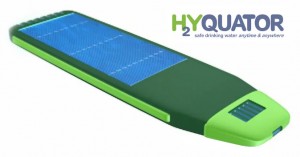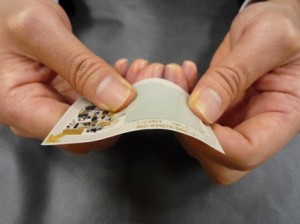
New research presented at a meeting of the American Chemical Society March 26, showed a new genre of plastics that mimic the human skin’s ability to heal itself. Self-healing plastics have been developed for a while, but what makes this new material unique is it’s ability to “bleed” and heal itself over and over again in the same spot. The “bleeding” is achieved by using small molecular links or bridges that break when the plastic is scratched. When damaged the plastics turn red, and then can heal itself when exposed to light.
Professor Marek W. Urban, Ph.D. with the University of Southern Mississippi in Hattiesburg, foresees a wide range of potential applications for plastic with warn-and-self-repair capabilities. It could be used from everything from scratches in automobile fenders that then potentially could easily be repaired by simply exposing the fender to intense light, to critical structural parts in aircraft that would warn of damage by turning red at affected and damaged areas.
Continue reading “New plastic mimics human skin, can ‘bleed’ and heal itself”









